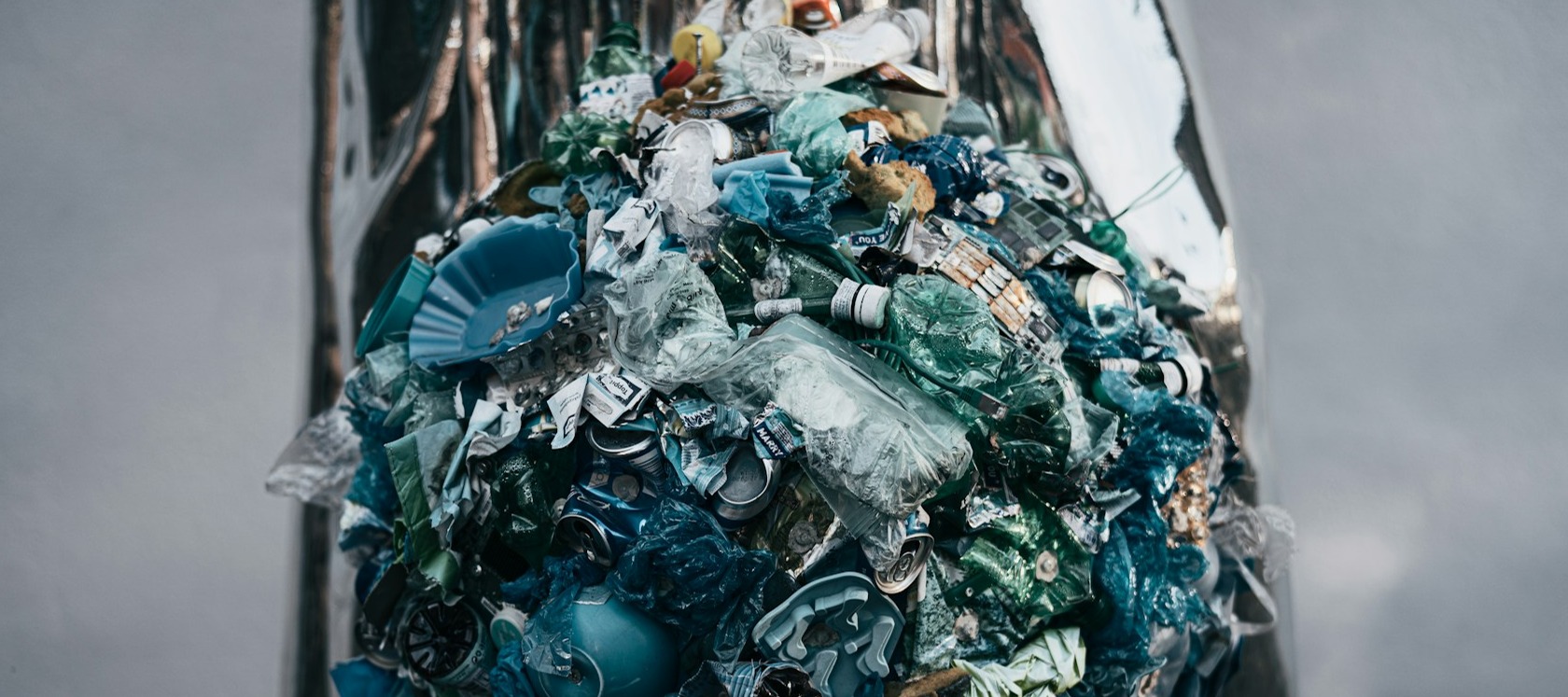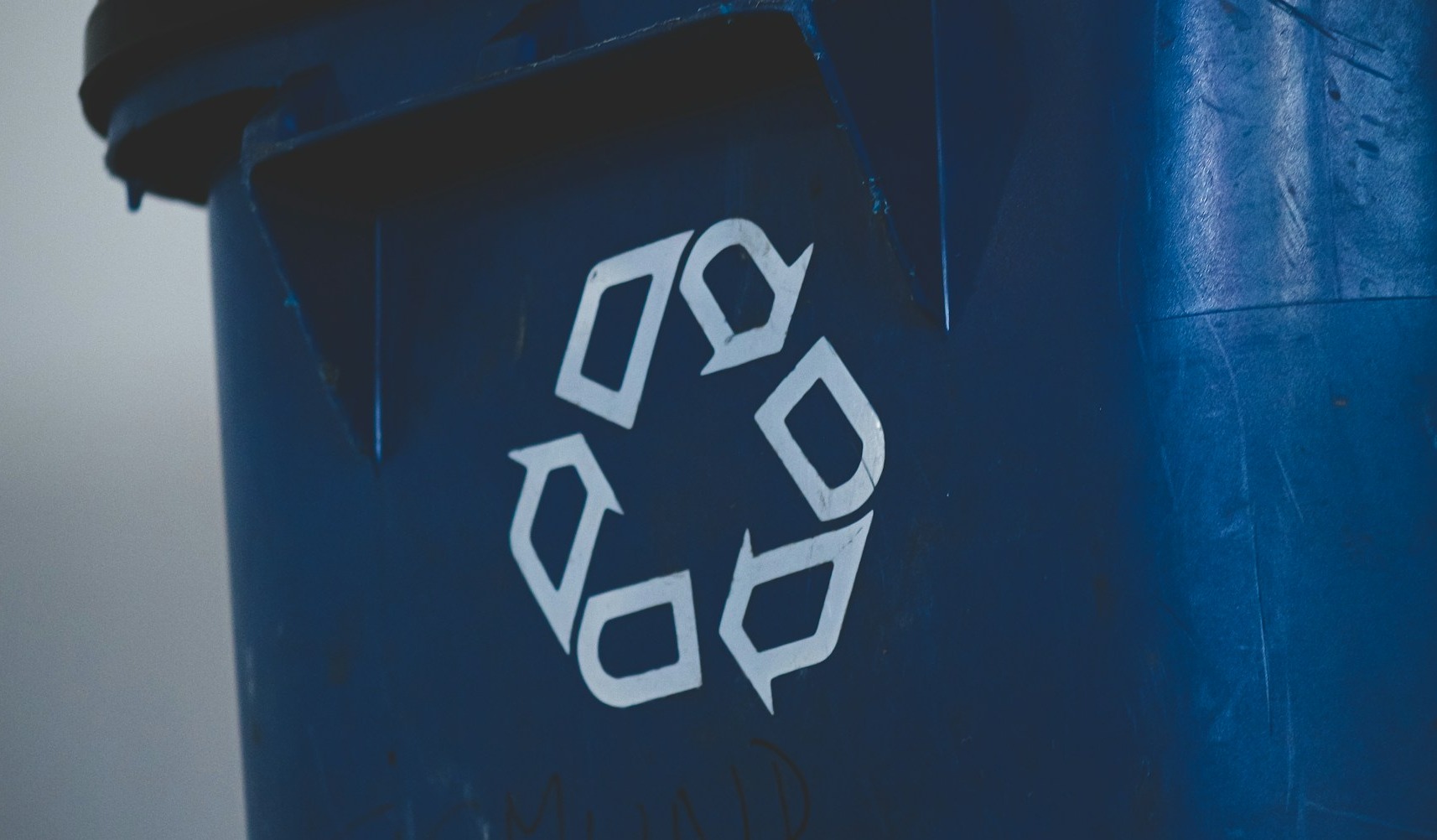Impacts On Environment & Humans
Hello Youths တို့ရေ မနေ့က "Microplastics:The Invisibel Threat In Our Everyday Lives" (Part 1) ကနေပြီး
"Origin of Plastic" အကြောင်းကိုသေချာလေး သိရှိလိုက်ကြမယ်လို့ မျှော်လင့်ပါတယ်။ ဒါဆိုရင် Part-2 လေးကိုလည်း ဆက်ဖတ်ကြည့်လိုက်ပါဦးနော်...။
"ပတ်ဝန်းကျင်အပေါ် ဘယ်လိုသက်ရောက်မှုရှိလဲ?"
ပလတ်စတစ်ညစ်ညမ်းမှုဟာ သမုဒ္ဒရာနဲ့ ကုန်းမြေနှစ်ခုလုံးပေါ်မှာ ပျံ့နှံ့နေတဲ့ သဘာဝပတ်ဝန်းကျင်ဆိုင်ရာ ပြဿနာတစ်ခုဖြစ်ပါတယ်။လူတွေရဲ့ မဆင်မခြင် အမှိုက်စွန့်ပစ်ခြင်းနှင့်အတူ အခြားသောအကြောင်းအရင်းတွေကြောင့် ပင်လယ်သမုဒ္ဒရာထဲ ရောက်ရှိသွားတဲ့ ပလတ်စတစ်ပမာဏဟာ တစ်နှစ်လျှင် တန်ချိန်သန်းပေါင်းများစွာရှိပါတယ်။ အခုလိုမျိုး ပင်လယ်သမုဒ္ဒရာထဲမှာ ပလတ်စတစ်တန်ချိန်သန်းပေါင်းများစွာ တည်ရှိနေတဲ့အတွက် ရေရှည်မှာ ပတ်ဝန်းကျင်ဆိုင်ရာ အကျိုးဆက်တွေဟာ အထူးစိုးရိမ်ဖွယ်ရာပဲဖြစ်ပါတယ်။ ရေထုထဲမှာရှိတဲ့ ပလတ်စတစ်တွေဟာ နေရောင်ခြည်နဲ့ ပင်လယ်ရေလှိုင်းတွေ ကြောင့် ပြိုကွဲပျက်စီးမှုဖြစ်ပြီး 5mm ထက်ပင်သေးငယ်တဲ့ Microplastic ဖြစ်လာပါတယ်။ အဲ့ဒီအလွန်သေးငယ်တဲ့ပလတ်စတစ်အပိုင်းအစလေးတွေဟာဆိုရင် ပတ်ဝန်းကျင်မှာ ဆွေးမြေ့ပျက်စီးမသွားပဲ ရာစုနှစ်များစွာတိုင်အောင် တည်ရှိနေပါတယ်။ မိုက်ခရိုပလတ်စတစ်တွေကို သောက်သုံးရေ၊ ပင်လယ်စာနဲ့ ကျွန်တော်တို့ရှူရှိုက်နေတဲ့လေထဲမှာလည်းပဲ တွေ့ရှိနိုင်ပါတယ်။ ဂေဟစနစ်တွေအတွင်းမှာ Microplastics ရှိနေခြင်းဟာ တောရိုင်းတိရိစ္ဆာန်တွေမှာဆိုရင် မျိုးပွားမှုနဲ့ ကြီးထွားမှုလုပ်ငန်းစဉ်တွေကို အနှောင့်အယှက်ဖြစ်စေနိုင်ပြီး တိရစ္ဆာန်အကောင်ရေကျဆင်းမှုနဲ့ ဂေဟစနစ်တွေကို ပြောင်းလဲစေနိုင်ပါတယ်။ ကုန်းမြေပေါ်မှာဆိုရင်တော့ ပလတ်စတစ်အမှိုက်တွေက မြစ်တွေ၊ ချောင်းတွေကို ပိတ်ဆို့ကာ အမှိုက်ပုံများ ပြည့်စေပြီး မြေဆီလွှာကို ညစ်ညမ်းစေပါတယ်။ အခုလိုကျယ်ပြန့်တဲ့ မြေထုညစ်ညမ်းမှုဟာ တောရိုင်းတိရစ္ဆာန်နဲ့ ဂေဟစနစ်အပေါ်မှာ ဆိုးဆိုးရွားရွား သက်ရောက်မှုရှိပါတယ်။ လိပ်များ၊ ငှက်များနှင့် ငါးများကဲ့သို့သော ရေနေသတ္တဝါတွေက ပလတ်စတစ်အမှိုက်များကို အစာအဖြစ် လွဲမှားစွာ စားသုံးလေ့ရှိကြပါတယ်။ ထိုကဲ့သို့စားသုံးမိရာကတစ်ဆင့် အာဟာရချို့တဲ့ခြင်း၊ အူလမ်းကြောင်းပိတ်ဆို့ခြင်းနှင့် သေဆုံးသည်အထိပါ ဖြစ်စေနိုင်ပါတယ်။။ ဒါ့အပြင် တိရိစ္ဆာန်တွေပလတ်စတစ်အမှိုက်များအတွင်း နစ်မြုပ်သွားကာ ထိခိုက်ဒဏ်ရာရခြင်း သို့မဟုတ် ပလတ်စတစ်အမှိုက်များနှင့် ငြိတွယ်ပြီး ရေနစ်ခြင်းတို့ကို ဖြစ်စေနိုင်ပါတယ်။
ဒါတွေကတော့ တိရိစ္ဆာန်တွေ၊ မြေထုနဲ့လေထုအပေါ် သက်ရောက်မှုတွေပဲ ရှိပါသေးတယ်။ အကောင်ငယ်လေးတွေကအစ အစာကွင်းဆက်အထက်ဆုံးမှာရှိတဲ့ အဏ္ဏဝါသတ္တဝါကြီးတွေအထိ သက်ရောက်မှုရှိရုံတင်မက နောက်ဆုံး ကျွန်တော်တို့လူသားတွေရဲ့ ကျန်းမာရေးကိုလည်း ထိခိုက်စေနိုင်ပါသေးတယ်။ ပလတ်စတစ်ညစ်ညမ်းမှုကို ကိုင်တွယ်ဖြေရှင်းရာမှာ ကမ္ဘာမြေကြီး၏ ဇီဝမျိုးစုံများကို ကာကွယ်ဖို့ကလည်း အရေးကြီးတဲ့ ကဏ္ဍတစ်ခုအနေနဲ့ပါ၀င်ပါသေးတယ်။
"လူသားတွေရဲ့ ကျန်းမာရေးကို ဘယ်လိုပုံစံတွေနဲ့ အန္တရာယ် ဖြစ်စေသလဲ?"
ကျွန်တော်တို့နေ့စဥ် အများဆုံး အသုံးပြုနေတဲ့ ပလတ်စတစ် ထုတ်ကုန်တွေမှာ ပါ၀င်တဲ့ Phthalates နှင့် Bisphenol A (BPA) ကဲ့သို့သော အဆိပ်သင့်သော ဓာတုပစ္စည်းတွေကို အလွယ်တကူ ရှူရှိုက်မိပြီး ကျွန်တော်တို့ရဲ့ ခန္ဓာကိုယ်ထဲကို ၀င်ရောက်လာတယ်ဆိုတာ သိပါသလား?ပလတ်စတစ်အမှိုက်တွေကို မီးရှို့ခြင်းကတစ်ဆင့် ဒီဓာတုပစ္စည်းတွေဟာ လေထုထဲကို ရောက်ရှိသွားပြီး လေထု၊ ရေထုနဲ့ မြေဆီလွှာကို ညစ်ညမ်းစေပါတယ်။ ဒါ့အပြင် လှိုင်းများနှင့် နေရောင်ခြည်က ရောင်ခြည်တွေကလည်း ပင်လယ်ထဲမှာရှိတဲ့ စွန့်ပစ် ပလတ်စတစ်များကို ပြိုကွဲစေပြီး မိုက်ခရိုပလတ်စတစ်များ(Microplastics)ကို ရေထုထဲသို့ ပြန့်နှံ့စေပါတယ်။ ပင်လယ်စာ(Sea Food), ဆား (Salt) နှင့် ပလတ်စတစ်ရေဘူး(Plastic Water Bottle) ကဲ့သို့သော ပလတ်စတစ်နှင့် ထုပ်ပိုးထားတဲ့ အစားအစာတွေမှာ ဒီမိုက်ခရိုပလတ်စတစ်(Microplastics) တွေပါ၀င်နေတာကို တွေ့ရှိနိုင်ပါတယ်။ > pchy_4: အဆိပ်ဖြစ်စေတဲ့ ဓါတုပစ္စည်းတွေပါ၀င်တဲ့ ဒီမိုက်ခရိုပလတ်စတစ်တွေ(Microplastics)ဟာ လူတွေ အမှတ်တမဲ့ ပလတ်စတစ်ပစ္စည်းများနှင့်တိုက်ရိုက်ထိတွေ့ခြင်း၊ အစားအစာနဲ့ ရေထဲတွင် ရောစပ်နေသော အရာများကို စားသုံးခြင်းနဲ့ အသက်ရှူခြင်းမှတစ်ဆင့် လူ့ခန္ဓာကိုယ်ထဲ ၀င်ရောက်လာတာပဲဖြစ်ပါတယ်။ သုတေသနပညာရှင်တွေရဲ့ အဆိုအရ ကျွန်တော်တို့ရဲ့ အဆုတ်၊ သွေး နဲ့ အစာအိမ်လမ်းကြောင်း အပြင်အခြားသော အစိတ်အပိုင်းတွေမှာပါ ဒီမိုက်ခရိုပလတ်စတစ်တွေ ရှိနေနိုင်တယ်လို့ ဆိုပါတယ်။ ဒါ့အပြင် မိုက်ခရိုပလတ်စတစ်တွေဟာ လူ့ခန္ဓာကိုယ်အတွင်းရှိ ဆဲလ်များကို သိသိသာသာ ပျက်စီးစေပြီး ကင်ဆာ၊ အဝလွန်ခြင်း၊ အဆုတ်ရောဂါနှင့် မွေးရာပါချို့ယွင်းချက်များ အပါအဝင် ကျန်းမာရေးဆိုင်ရာ ပြင်းထန်သော အကျိုးသက်ရောက်မှုများကို ဖြစ်စေတာကို လေ့လာတွေ့ရှိချက်တွေအရ သိနိုင်ပါတယ်။ ဒါတင်မကသေးပဲ ပလတ်စတစ်မှာပါတဲ့ အဆိပ်သင့် ဓာတုဗေဒပစ္စည်းတွေက လူ့ခန္ဓာကိုယ်မှာရှိတဲ့ ဟော်မုန်းလုပ်ဆောင်ချက်ကိုပြောင်းလဲစေပြီး မျိုးပွားမှု၊ ကြီးထွားမှုနဲ့ မှတ်ဉာဏ်လုပ်ဆောင်ချက်တွေကို အနှောင့်အယှက်ဖြစ်စေပါတယ်။
ပိုပြီးမြင်သာအောင် ပြောရမယ်ဆိုရင် ပလတ်စတစ်မီးရှို့ရာကနေ ထွက်တဲ့ အခိုးအငွေ့တွေ ရောနှောနေတဲ့ လေထုကိုရှူရှိုက် မိရာကတစ်ဆင့် ရေတိုအနေနဲ့ အသက်ရှုလမ်းကြောင်းနဲ့ ဆိုင်တဲ့ ချောင်းဆိုးတာတွေ ချွဲပိတ်တာတွေအပြင် အသက်ရှုရခက်ခဲတာတွေ ဖြစ်နိုင်ပါတယ်။ ရေရှည်မှာဆိုရင် ကင်ဆာ၊ နာတာရှည်အသက်ရှုလမ်းကြောင်းဆိုင်ရာ ရောဂါနဲ့ နှလုံးသွေးကြောဆိုင်ရာ ရောဂါတွေဖြစ်နိုင်ပါတယ်။ ဒါ့အပြင် အစားအသောက် အပူတွေကို ပလတ်စတစ်နဲ့ ထုပ်ပိုးပြီး သုံးဆောင်ရာကနေတစ်ဆင့် ကလေးတွေမှာဆိုရင် ကြီးထွားနှုန်းကို အဟန့်အတားဖြစ်စေပြီး အရွယ်ရောက်ပြီးသား လူတွေအနေနဲ့ မျိုးပွားခြင်းနဲ့ အာရုံကြောဆိုင်ရာ လုပ်ဆောင်ချက်တွေမှာ အဟန့်အတားဖြစ်စေပါတယ်။ မိုက်ခရိုပလတ်စတစ်ရောနှောနေတဲ့ ရေကိုသောက်သုံးတာများပြီး ခန္ဓာကိုယ်တွင်းမှာ စုပုံလာတဲ့အခါ ဆဲလ်(Cells)၊ ကိုယ်တွင်း၊ကိုယ်ခန္ဓာ အစိတ်အပိုင်းများ(Internal Organs)နဲ့ ကိုယ်ခံအားစနစ်(Immune System) စတဲ့ Body Functionတွေကို များစွာ ⁰⁷ထိခိုက်စေပါတယ်။ ထို့အပြင် ကမ္ဘာအနှံ့ရှိ ပင်လယ်ကမ်းခြေဒေသများ အထူးသဖြင့် လုံလောက်သော "Waste Management" မရှိတဲ့ဒေသက ဒေသခံတွေမှာ အသက်ရှုလမ်းကြောင်းနဲ့ အစာအိမ်အူလမ်းကြောင်းဆိုင်ရာ ရောဂါများ ခံစားနေရတာကို တွေ့ရပါသေးတယ်။
"Impacts On Environment & Humans (English)
Hello youths! I hope you gain a thorough understanding of the "Origin Of Plastic" through "Microplastics: The Invisible Threat In Our Everyday Lives" (Part 1). Then, let's continue reading Part-2.
"How Does Plastic Pollution Affect The Environment?"
Plastic pollution is a widespread environmental issue affecting both land and oceans, with millions of tons of plastic entering the oceans each year due to improper waste disposal and other causes. The long-term environmental impact of these millions of tons of plastic in the ocean is alarming. Sunlight and ocean waves break down plastics into microplastics smaller than 5mm, which remain in the environment for centuries without decomposing. These microplastics are found in drinking water, seafood, and even the air we breathe. The presence of microplastics in ecosystems disrupts the reproduction and growth processes of wildlife, causing population declines and altering ecosystems. On land, plastic waste clogs rivers and streams, fills landfills, and pollutes the soil, leading to devastating effects on wildlife and ecosystems. Aquatic animals such as turtles, birds, and fish often mistake plastic waste for food, resulting in nutritional deficiencies, intestinal obstructions, and death. Animals can also get injured or drown by becoming entangled in plastic waste.
These impacts on animals, soil, and the atmosphere extend beyond not only the small creatures but also those at the top of the food chain, and the top of the food chain to affect human health as well. Addressing plastic pollution is crucial for protecting the planet’s biodiversity.
How Does Plastic Harm Human Health?
Did you know that we easily inhale toxic chemicals like phthalates and bisphenol A (BPA) from everyday plastic products? When plastic waste is burned, these chemicals enter the atmosphere, polluting water and soil. Additionally, ocean waves and sunlight break down plastic waste into microplastics, which contaminate water. Microplastics are found in foods packaged with plastic, such as seafood, salt, and plastic water bottles.
These toxic microplastics enter our bodies through the food we eat and the air we breathe. Researchers have found microplastics in our lungs, blood, and gastrointestinal tract. Microplastics can damage human cells and have been linked to cancer, obesity, lung disease, and birth defects. Furthermore, the toxic chemicals in plastics disrupt hormone function, affecting reproduction, growth, and memory.
To explain further, inhaling air polluted with fumes from burning plastics can cause short-term effects like coughing and mucus congestion, as well as difficulty breathing. Long-term exposure can lead to cancer, chronic respiratory disease, and cardiovascular disease. Consuming food wrapped in plastic can stunt children’s growth and impair reproduction and neurological function in adults. Drinking water contaminated with microplastics affects cells, internal organs, and the immune system. Coastal areas lacking proper waste management suffer from respiratory and gastrointestinal diseases.

Microplastics: The Invisible Threat In Our Everyday Lives (Part 2)
Impacts On Environment & Humans
The Blossoms
13 Jun 2024
 THE
THE 

-v1.jpg)